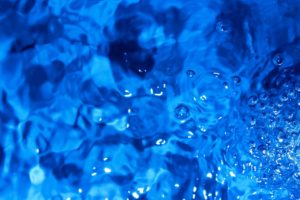The pH shows the acidity or alkalinity value of the water. We can measure the acids through the concentration of hydrogen ions: strong acids have high concentrations of hydrogen ions and weak acids have low concentrations. Plants, like the humans, have a shifting pH value. If they don’t have a proper pH they will not enjoy good health, being more exposed to be attacked by fungi, viruses and unwanted insects. With an appropriate pH, we get stronger and healthier plants.
To understand the pH it’s important to consider the acidity, which determines the absorption and solubility capabilities of different nutrients. The pH level varies between 0 and 14, so water with a pH below 7 is considered acid water, while with levels over 8 is considered alkaline water. A pH level of 7 it’s considered neutral.
pH levels
The pH levels of the irrigation water also modify the pH levels of the soil. Tap water, in most cases, have pH levels higher than 7 on most places, especially in the cities, because it contains more calcium. The recommended pH for all kind of growths, varies between 6,5 and 7,5, so if you irrigate plants with a higher or lower pH, it could damage the plants.
With a lower pH (lower than 4), more acid, the plants roots can be damage. Furthermore, some nutrients are easily dissolved with these levels of pH, being absorbed by the plants easily, but this can cause an overload of aluminum and iron, and a lack of other important nutrients like magnesium, potassium or phosphorus.
With a lower pH, the heavy metals can cause also necrosis in the plants roots.
The water with a high pH has also negative effects in the plants, because the more alkalinity the water is, less capacity of nutrients to be dissolved. This can cause a lack of nutrients in the plants and consequentially problems for their growth (yellow leaves, plants that don’t grow enough…).
How to stabilize the pH of water
With the pH meter we can measure the hydrogens concentration in the water. Once we know the pH of water we have, we can control it value using some acid/alkaline products that we can add to the fertilizers and nutrients solution we give to the plants.
However an easy way is using reverse osmosis water ¿why?
Reverse osmosis water has a pH value of approximately 6,5. If we use this type of water, we always know the Ph of water we have, which will help us to water the plants. We also have water free of chemicals (chlorine) as well as salts and heavy metals, or in other words, a lower EC water. Using a quality water we will warranty a healthier plants and protected from fungi or viruses attacks.
Know more advantages of using quality water and grow it to the Max with GrowMax!


